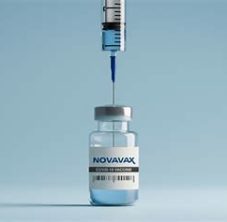For many years our county’s officials have been extolling MoCo as a bio-tech center. In his weekly message from August 2, Marc Elrich said MoCo is #3 among all of America’s life science hubs. In a Glass Gazette from July 2024, Council Member Evan glass noted that “Our life sciences sector is incredibly important to Montgomery County (and the world).”
To what extent that’s true is not clear. Fierce Biotech published a list of the top five biotech hubs in 2022, and MoCo wasn’t listed. A year later Drug Discover and Development listed the top 10 rising stars in biotech, and the closest they came to us was Baltimore. On the other hand, Bio Buzz focuses on employment opportunities in three regions: Capital Region (us included), Greater Philadelphia, and Research Triangle Park. Yes, we’re on the map, but I haven’t found an indication that MoCo itself is #3.
Nevertheless, MoCo’s importance as a life sciences center isn’t the point. The actual matter is to what extent this exaltation costs the taxpayers, and to what extent the needy are going hungry to achieve it.
We get an indication of that wealth transfer in a memorandum of understanding between MoCo and WMATA announcing the planned University of Maryland’s Institute for Health Computing (UM-IHC) in North Bethesda (see lead image). That MOU lists some of the public funding used to establish the institute:
- $5 million from the federal government
- $21.6 million from the state government
- $10 million from the county government
That’s just to do the infrastructure. Over the next five years the county will contribute $40 million and UMD $25 million. No doubt there is more we have yet to discover.
Two points. First, why on earth is such government largess required to bring life sciences to North Bethesda? The MOU tells us exactly why:
Such dynamic live/work/learn/play ecosystems are anchored by high quality amenities that attract educational institutions, private companies, and research organizations, such as convenient access to public transit, attractive public open spaces and social gathering spots for informal social interactions; diverse housing options for employees, as well as recent post-doctoral candidates, graduate students, and visiting professors; and office and lab space to accommodate spin-off companies.
Were I a visiting professor, I’d also like to live/work/learn/play with high-quality amenities in an ecosystem. However, why should taxpayers fund my lifestyle?
This brings us to the second point. IT requires cheap infrastructure. All you need is a building, a parking lot, and high-performance network equipment—and with all the remote working, you don’t even need the stupid building! With life sciences, you need all of the above plus laboratories, clean rooms, 13-foot floors, and vibration protection (source). These up-front costs cannot be funded by the private bio-tech sector, so taxpayers are coerced into paying.
Here is the fallacy:
- MoCo can attract academic and white-collar workers from the IT, finance, or other sectors at a cost much lower than life sciences.
- We hear about food insecurity, housing insecurity, and transportation insecurity that our most vulnerable county residents must endure. My feeling is that these insecurities could be resolved by relaxing restrictions that get in the way of businesses delivering those resources to those who need them most. If, however, we want to continue with government assistance to those in need, then that assistance must be at a much higher priority than subsidizing the live/work/learn/play lifestyle.




